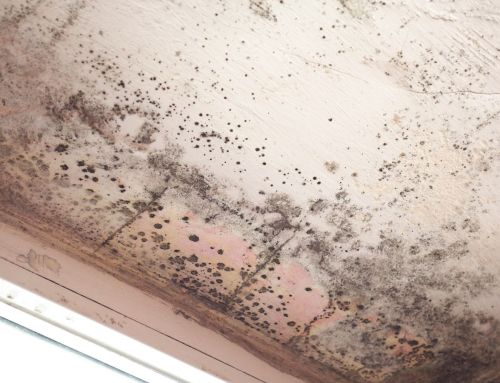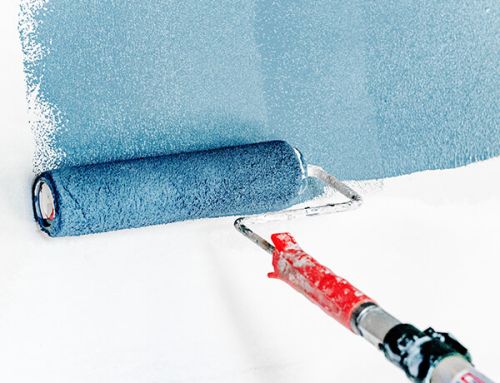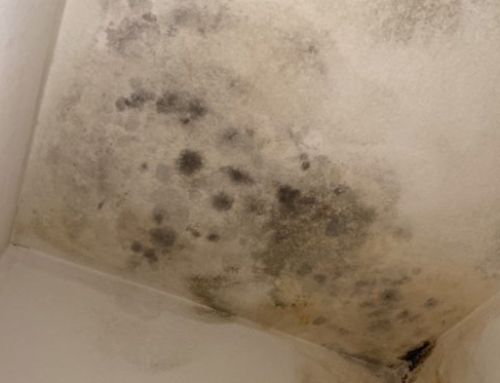Mold poses a significant challenge for many homeowners, and its potential harm extends beyond what meets the eye. Unfortunately, mold myths are widespread. This misinformation prevents some homeowners from taking necessary action while others pursue counterproductive repairs. Before you begin scrubbing every surface or panicking about its potential dangers, let’s separate fact from fiction.
We will debunk common myths surrounding mold, shedding light on what’s true and what’s merely speculation. From the misconceptions about its toxicity to the effectiveness of DIY remedies, we’ll explore the truth behind these myths to help you better understand mold and how to address it effectively. Get ready to bust some mold myths and better understand this common household concern.
Myth 1: Mold is always visible
Not all mold is visible to the naked eye.
Visible mold growth is one of the most common indicators of an infestation. Yet not all mold comes along with visible discoloration or patches. According to the EPA, “Molds reproduce by means of tiny spores; the spores are invisible to the naked eye and float through outdoor and indoor air.” These microscopic spores can lurk in hard-to-reach areas within a home, like beneath carpet and wallpaper.
Sometimes, a musty odor is the only indicator of mold. Detecting this invisible mold requires specialized equipment or a professional inspection to identify the problem effectively. Despite not being immediately noticeable, hidden mold can still pose health risks and cause damage to structures if left untreated.
Myth 2: Mold only grows in old, dirty homes
Mold can grow anywhere there is moisture.
Contrary to popular belief, mold growth is not related to the cleanliness of a home. Instead, it’s all about humidity and moisture levels. Cleanliness can play a role in reducing mold growth by minimizing potential food sources, like dust and organic debris. However, the primary factor of mold growth is moisture.
Mold can grow anywhere there is excess moisture, especially in hidden areas like under tiles and crawl spaces. All it takes is one persistent leak or drip for mold to take root. This means old and new homes are equally susceptible to mold growth but for different reasons.
Older houses are more prone to mold growth from wear and tear on building materials, such as roofing and plumbing. These problems can lead to water intrusion and leaks. They are also more likely to have outdated ventilation systems, which do not effectively circulate air or remove excess moisture.
New construction can have improperly installed or sealed components, such as windows, doors, and roofing. Inappropriate lumber storage can also cause new building materials to absorb excess moisture, leading to mold growth and infestation.
Myth 3: All mold consultants are licensed
Unfortunately, not all mold consultants are licensed.
It’s best to hire a qualified mold remediation specialist whenever possible to ensure the job is safely and effectively completed. Specific licensing or certification requirements vary by state. In some areas, contractors can provide mold assessment or consulting services without formal licensing.
Be wary of unlicensed contractors. Do not take their recommendations as a substitute for professional advice. We recommend asking for a company’s qualifications before submitting any payment or signing a contract.
Myth 4: Insurance never covers mold
This is partially true. It depends on your circumstances.
Home insurance policies typically do not cover dry rot, fungus, or mold. Homeowners ‘ insurance likely does not cover any claims caused by neglect of the property. Examples of negligence include ignoring a broken pipe with a slow leak or failing to fix a window that allows rain to seep in over time.
However, some insurance companies may provide coverage for mold damage caused by a covered peril that is sudden or accidental in nature—for example, flooding caused by a natural disaster or a water heater bursting.
Renters insurance will typically cover damage to your personal property if a covered peril caused the mold. The policy’s liability section usually defends the claim if residents sue the property owner for mold-related water damage.
Myth 5: A small spot of mold isn’t a major concern
Even a small mold spot can be a big problem.
While a small mold spot may seem insignificant, it can still be concerning. Even small amounts of mold can indicate underlying moisture issues that may lead to more significant problems if left untreated.
When mold spores land on a damp spot in your home, they can spread and form a colony within 48 hours. Therefore, it’s essential to promptly address mold growth, regardless of size, to prevent further spread and potential health risks.
Myth 6: You should always start with a mold test
False. A mold test should only be performed after a thorough inspection.
If you suspect mold but are unsure of its presence, starting with a professional mold inspection is recommended. An inspection allows trained experts to visually assess your property, identify any visible mold growth, locate moisture sources, and determine the extent of the problem. Based on the inspection findings, further testing may be recommended to confirm the presence of mold, identify the type of mold present, and assess indoor air quality.
On the other hand, if you already know there is mold or have had previous mold issues, conducting mold testing may provide valuable information for targeted remediation efforts. Still, extensive testing can become costly with no real benefit. While it’s good to know what type of mold is present in your house, experts often apply the same solutions regardless of the species.
Ultimately, consulting with a qualified mold remediation professional can help determine the most appropriate action for your needs.
Myth 7: Repeated mold exposure won’t make you sick
Anyone can develop allergic reactions from mold, depending on their overall health.
Everyone reacts to mold differently, and repeated exposure to high mold levels can increase the likelihood of developing symptoms over time. Mold spores, mycotoxins, and other byproducts of mold growth can irritate the respiratory system. Common symptoms of mold exposure include headaches, congestion, dizziness, watery eyes, and coughing.
Repeated or prolonged exposure to mold spores can cause skin irritation and long-term illnesses like asthma. People with suppressed immune systems and young children are the most susceptible to getting sick due to mold exposure.
Myth 8: Mold in your crawl space or basement can’t affect you
Mold always finds a way.
Basements and crawl spaces are prone to moisture buildup, creating an ideal mold growth environment. Mold spores released by the mold colony can become airborne and spread throughout your home, potentially causing health problems when inhaled.
Approximately 50% of the air in a crawl space or basement moves to the main living area. Therefore, the air from below can transport high levels of allergens and mold spores to the people above.
Myth 9: Mold isn’t caused by residents
People can cause mold accumulation.
Residents can indirectly contribute to mold growth by creating conditions that promote moisture accumulation. For example, cooking and showering release moisture into the air, leading to high humidity levels indoors if not adequately ventilated.
Water leaks, spills, or floods caused by a resident’s actions can create damp environments conducive to mold growth. Inadequate temperature control and plumbing issues can also cause or worsen the issue.
Myth 10: Bleach is always effective against mold
Household cleaners are not the best solution.
Household cleaners like bleach can temporarily reduce mold on non-porous surfaces like tiles, tubs, and countertops. However, mold can return if cleaned with bleach. It can’t reach the root cause of the problem— the moisture buildup in hidden spaces or porous materials such as wood and insulation.
That’s why homeowners should remove potential sources of moisture from the house. Exhaust fans in bathrooms can limit mold growth and help keep humidity low. It’s also important to note that bleach can emit harmful fumes and may be unsafe for all environments.
Myth 11: You can remove mold using a vacuum cleaner
Vacuuming may be part of a mold cleanup process, but it’s usually insufficient on its own.
While vacuuming can help remove mold spores from surfaces, it’s ineffective at eliminating the mold. It can’t reach inside surfaces or deep into porous materials like wood and insulation, where mold takes root. We don’t recommend vacuums for severe mold infestation cases. Vacuuming can sometimes spread mold spores into the air, potentially worsening the contamination.
Myth 12: You can clean up mold yourself
False. Cleaning up mold is complex and potentially hazardous.
Some molds, like mildew, are relatively harmless and can be easily cleaned with bleach. However, others, like black mold, are dangerous and must be addressed immediately by a professional mold remediation service to ensure safe and effective removal.
Mold remediation requires specialized tools, protective gear, and training. Mold removal companies have the necessary resources at their disposal. Professionals wear appropriate protective gear such as gloves, goggles, and a mask to avoid inhaling mold spores or skin exposure.
Myth 13: Painting over mold will eliminate it
Paint doesn’t kill mold.
Painting over mold will not eliminate it. In fact, painting over mold without properly addressing the underlying issue can exacerbate the problem. Mold can continue to grow and spread underneath the paint, leading to further damage to the surface and potential health risks.
It’s crucial to address mold issues at their source by identifying and addressing the moisture problem that allows the mold to thrive.
Mold-resistant paint only prevents mold growth. It will not kill existing mold. Instead, it helps to inhibit mold growth on the painted surface by creating a barrier that makes it more difficult for mold spores to take hold. Proper mold remediation techniques should be performed to remove the mold entirely before any painting is done. Otherwise, it could cost you more in the long run.
Myth 14: All mold is toxic
Not every mold species is inherently toxic.
Certain molds are used in food production, such as cheese, soy sauce, and some medicine, like antibiotics. Some molds also have industrial applications, such as producing enzymes and other useful compounds. Others can pose health risks and cause property damage.
Even non-toxic molds can cause health problems, particularly for individuals with allergies or respiratory conditions. It’s essential to address any mold growth promptly, regardless of its toxicity, to prevent potential health issues and property damage.
If you’re unsure about the type of mold present in your home, you should contact a professional for proper identification. A mold remediation company will determine the source and location of the mold, in addition to its type.
Myth 15: Mold has no benefits
Molds play a vital role in the environment.
One of its primary functions is in the decomposition process, where it breaks down organic matter such as dead plants, trees, and animals. This process helps recycle nutrients back into the soil, enriching it and supporting the growth of new life. In ecosystems, molds also regulate populations of other organisms by serving as food sources for various animals and insects.
Myth 16: Once the mold is gone, it can’t come back
Mold spores are present everywhere, and they occur naturally in most environments. They can enter indoor spaces through ventilation systems, windows, and doorways. It’s virtually impossible to eliminate all mold from your home, but it can be effectively controlled and managed.
The underlying cause of the mold growth must be addressed when treating an infestation. If the root cause is not remediated, mold is likely to return. Controlling moisture levels, improving ventilation, and promptly fixing water leaks will significantly reduce the likelihood of mold growth in indoor environments.
Debunking common myths is crucial so homeowners can effectively address mold issues and maintain a healthy living environment. By disproving misconceptions and understanding the true nature of mold, you can make informed decisions and protect your family against the potential risks of mold growth. Remember, knowledge is power in mold prevention and remediation, so stay informed and take proactive steps to tackle mold problems confidently.
Our Best Advice: Rely on the Pros
Pur360 is an industry leader with more than 15 years’ worth of award-winning experience. We specialize in mold remediation, testing, and sanitization services for commercial and residential customers. Our technicians are trained, professional, and friendly, and they’ll always have your best interests in mind.



